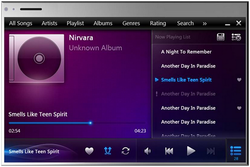| Windows Embedded Compact 7 | |
|---|---|
| Version of the Windows CE operating system | |
| | |
 Windows Embedded Compact 7.0 desktop | |
| Developer | Microsoft |
| Source model | |
| Released to manufacturing | March 1, 2011 |
| Kernel type | Hybrid kernel Monolithic kernel |
| License | Commercial proprietary software |
| Preceded by | Windows Embedded CE 6.0 |
| Succeeded by | Windows Embedded Compact 2013 |
| Official website | www |
| Support status | |
| Mainstream | Ended on April 12, 2016 [1] |
| Extended | Ended on April 13, 2021 [1] |

Windows Embedded Compact 7 (formerly known as Windows Embedded CE 7.0) is the seventh major release of the Windows Embedded CE operating system, released on March 1, 2011. [2] Windows Embedded Compact 7 is a real-time OS, separate from the Windows NT line, and is designed to target enterprise specific tools such as industrial controllers and consumer electronics devices such as digital cameras, GPS systems and also automotive infotainment systems. Windows Embedded Compact is designed to run on multiple CPU architectures and supports x86, SH (automotive only) [3] [4] and ARM.
During development, a Microsoft employee working in this division claimed that Microsoft was working hard on this release and that it shares the underlying kernel with Windows Phone. [5] Microsoft officially confirmed this and said that Windows Phone 7 is based on Windows Embedded CE 6.0 R3 with some features borrowed from Windows Embedded Compact 7, thus making it a hybrid solution. [6]
As with Windows Embedded CE 6.0, the platform builder for Windows Embedded Compact 7 is not a stand-alone product, but is implemented as plug-in for Microsoft Visual Studio - the version required is Visual Studio 2008 with Service Pack 1 installed.